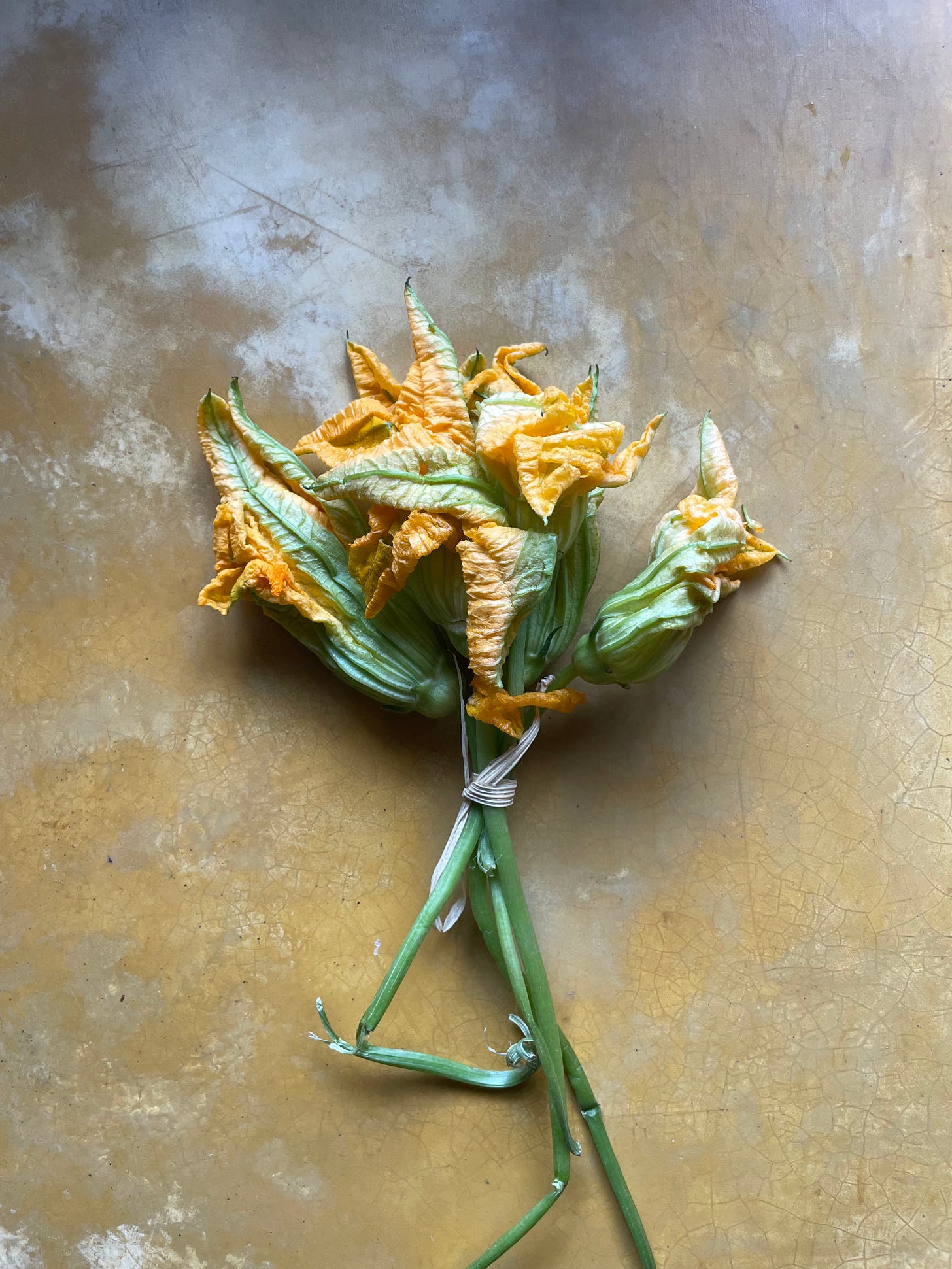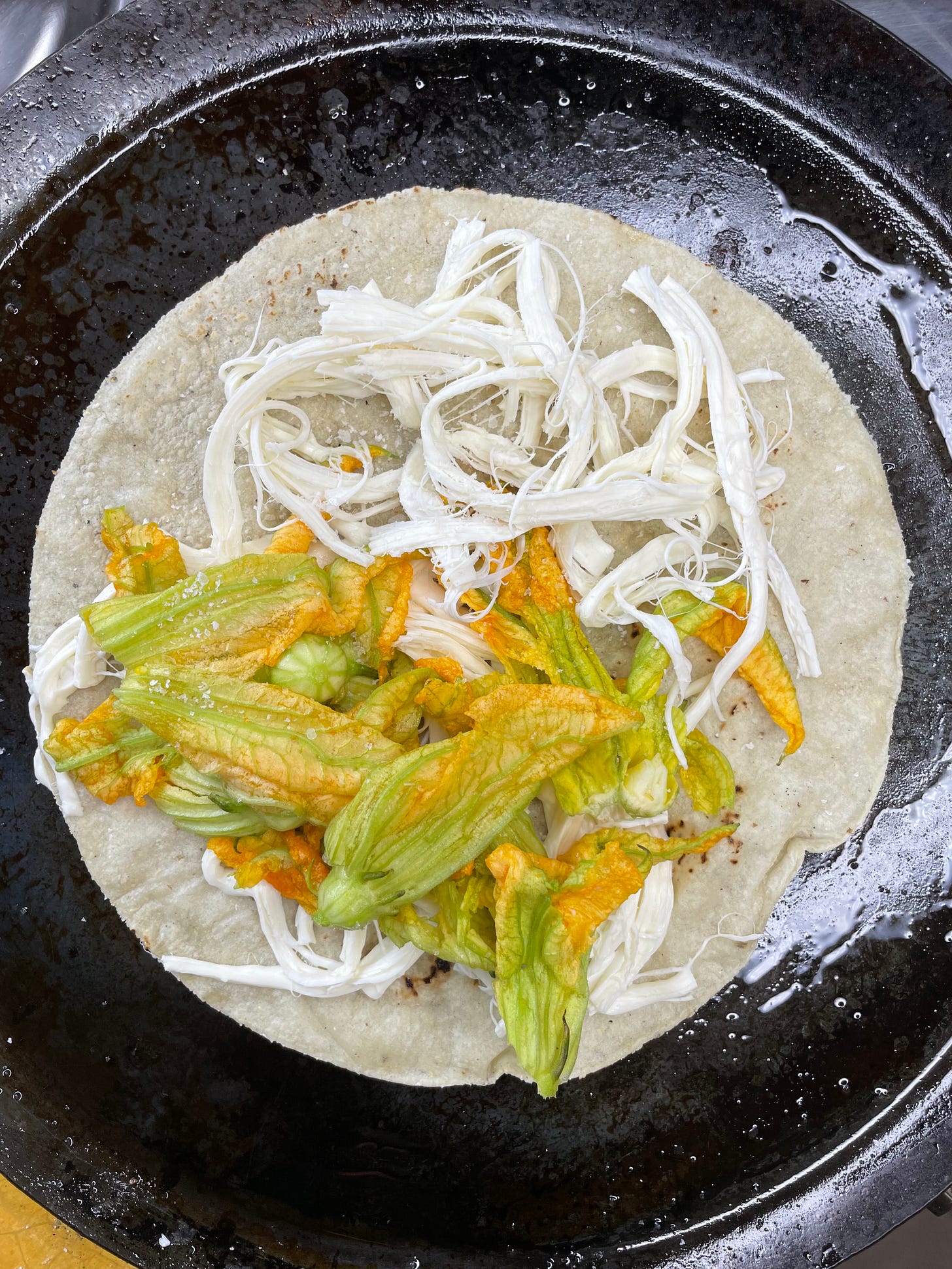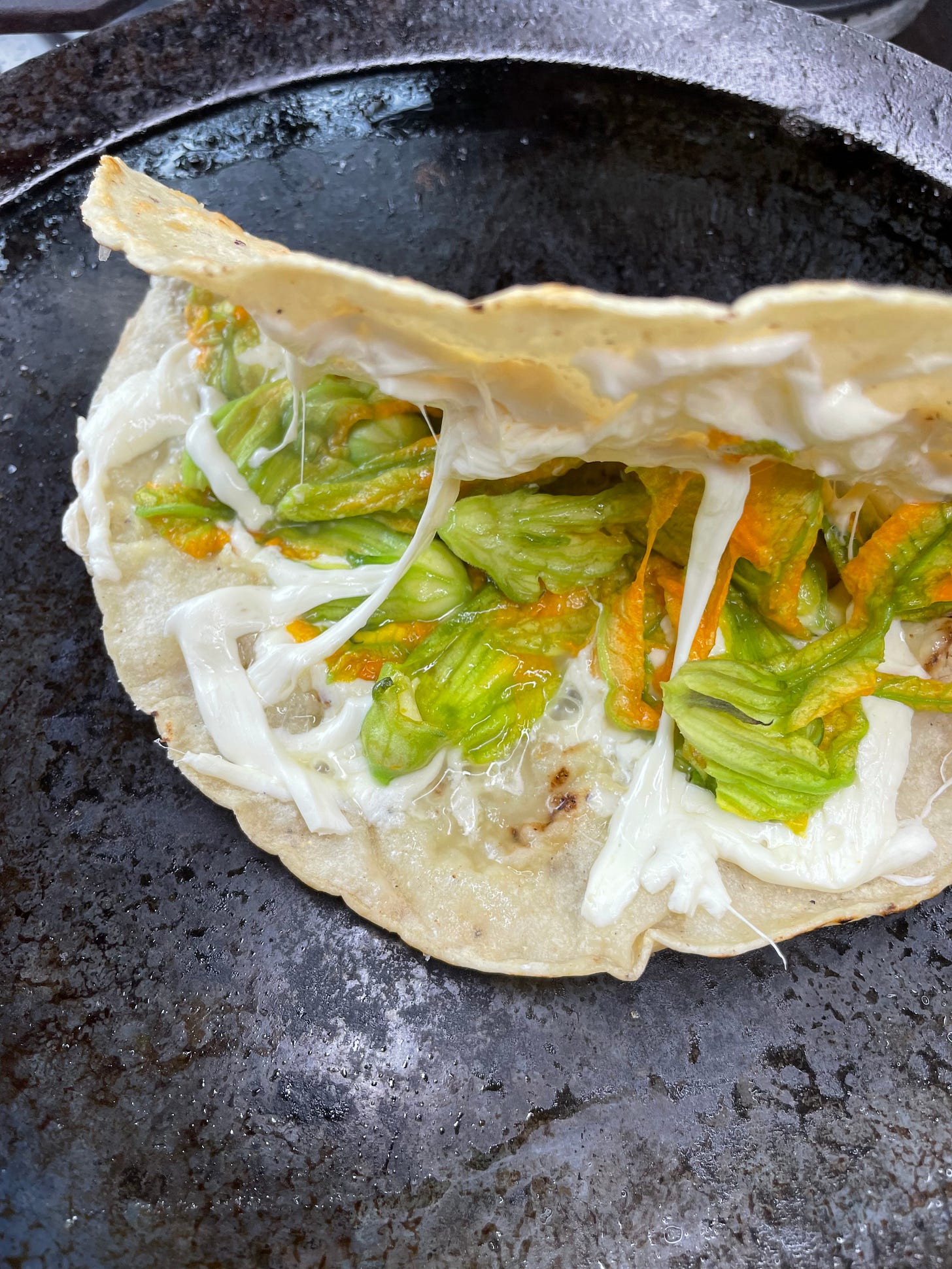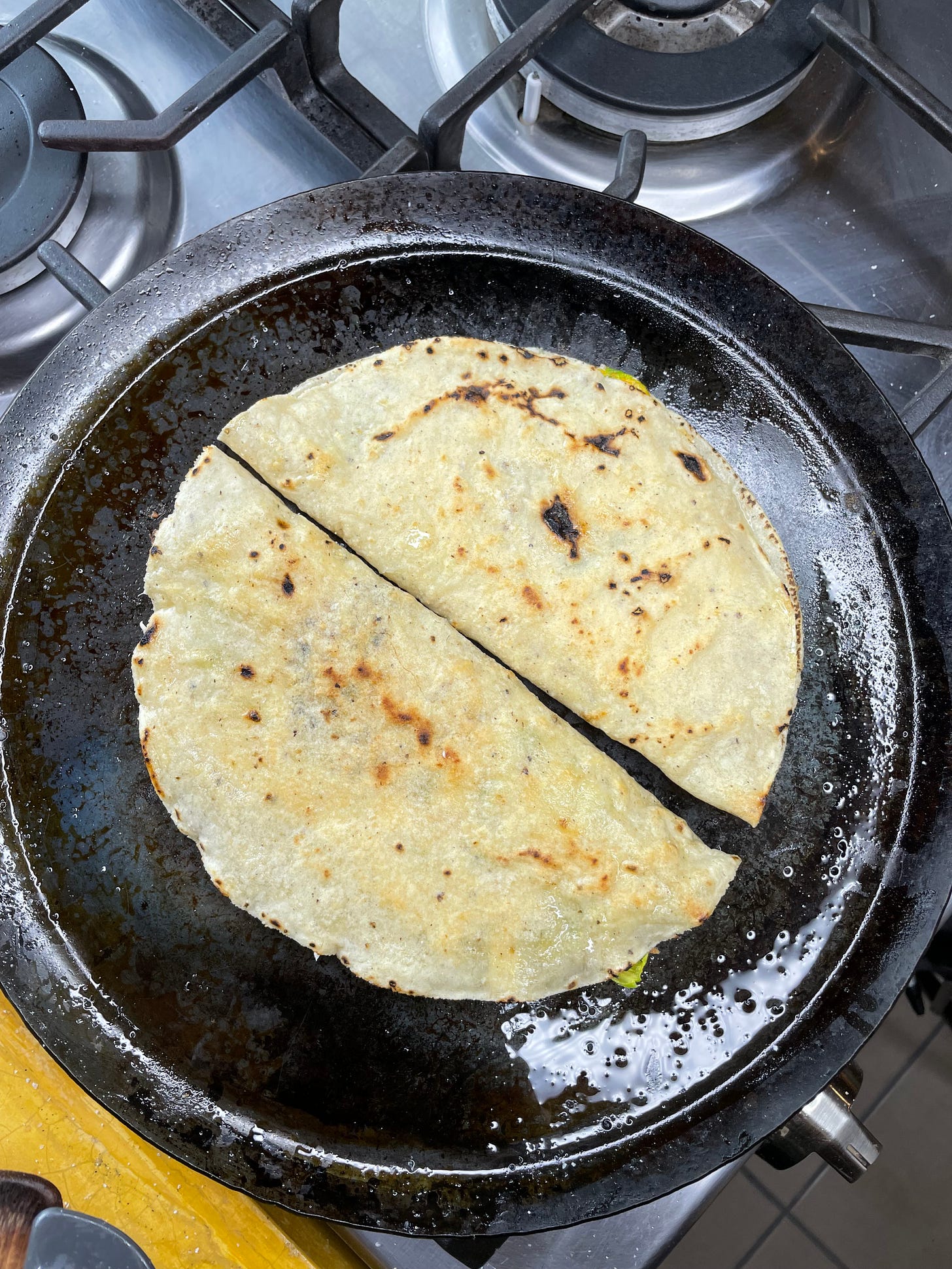The first time I tried to buy flor de calabaza, squash blossoms, I was living in Quincy, MA and working in Brockton at a community mental health clinic. The majority of my time was spent doing home-based therapy in the area, and while many of the communities were deeply impoverished as is typical in the U.S. they sat next to pockets of wealth. I found myself one day in a more upscale area passing by a farm offering pick-your-own vegetables for a nominal fee. A field of squash spread out before me, and I asked an employee if I could buy some squash blossoms, an ingredient I had heard about but never cooked with before. He said “hold on a moment so I can get one of the farmers” and he came back a minute later with a grumpy middle aged man with a deeply lined face who, skeptically, listened to my request.
“Well we’re going to have to charge you the same price as we would for the squash,” he said. “Any flowers we pick would have grown into squash.”
It’s an encounter that sticks with me for two reasons. The first is that this is total horseshit. Squash produce both male and female flowers. The female flowers develop into the squash we eat, and the males don’t. Those are the ones you eat. Secondly, squash blossoms are much more expensive by weight than squash, so in his attempt to fleece me he actually gave me a discount.
Here in Oaxaca they are decidedly easier to find, although Mexico does in fact have seasons and the blossoms aren’t available all-year round. I was in luck at the market on Weds though, and found one lonely-but-lovely bag to take home.
Enjoying A Year In Oaxaca? Share the love with a gift subscription!
Flor de Calabaza
I’m sorry to say I have no memory of what I did with that first ever batch of squash blossoms in Massachusetts, but it wasn’t the last time I cooked with them. Over the years I’ve tried a few different iterations of a classic Italian preparation, which sees the blossoms being stuffed with seasoned ricotta cheese and then being dipped in a light batter before being deep fried, emerging as crispy, pillowy, ephemeral clouds.
But my favorite iteration is flor de calabaza quesadillas, which I was first introduced to at the now long-shuttered Taqueria Los Compadres in the Washington D.C. neighborhood Mount Pleasant.
Flor de calabaza is a wonderful ingredient, light and vegetal with a nice squash-like flavor but without the dreadful texture most squash dishes offer. And flor de calabaza quesadillas are dead simple. Take a tortilla, layer it with shredded cheese—ideally quesillo (aka queso oaxaca), a type of salty mozzarella-like string cheese which melts beautifully—stick some squash blossoms on top, and then fold over the tortilla and heat it in a pan until it’s melty.
Quesadillas are by no means the only way to use these blossoms. Here in Oaxaca flor de calabaza are also used to fill empanadas, and I’ve heard they can be stirred into soup to add both thickness and flavor.
Tips for Quesadillas
It would be easy enough for me to put together a recipe, but I can’t in good conscience send one out into the universe without testing it at least a few times first. So in the interim, if you have an opportunity to cook with these blossoms, here are a few tips:
Grease your pan, either with vegetable oil or with lard. You definitely do not need to do this to make quesadillas, but having the extra fat will help the tortillas get really nice and crispy.
Tear up the squash blossoms a bit before you put them in the taco. It will help create a more even texture in the tacos.
Spread a layer of cheese, then the squash blossoms, and then more cheese. Enrobing the blossoms in cheese helps to trap the tasty liquid they’ll release, giving you a more luscious taco.
If you can’t get quesillo (you probably won’t be able to find it) cheese from chihuahua is also great, as is Monterey Jack. And you’ll get a better melt if you shred it yourself, versus buying pre-shredded, bagged cheese, which is coated in cornstarch to prevent clotting.








